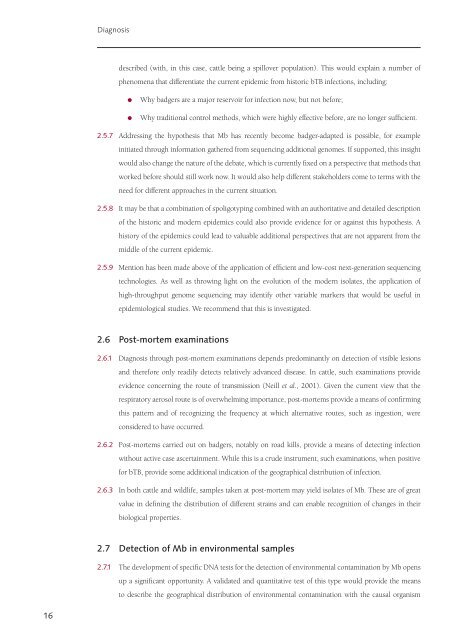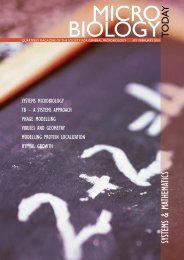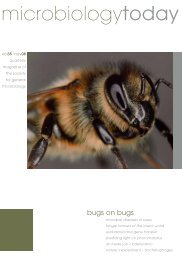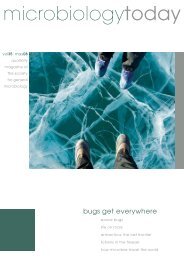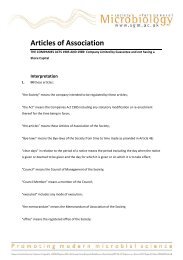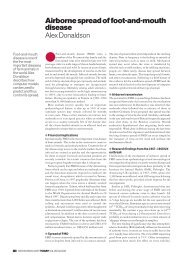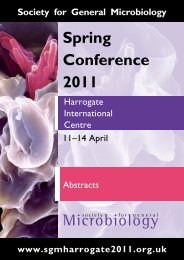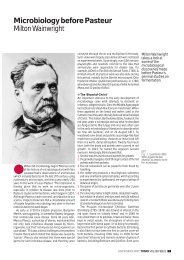final report - ARCHIVE: Defra
final report - ARCHIVE: Defra
final report - ARCHIVE: Defra
Create successful ePaper yourself
Turn your PDF publications into a flip-book with our unique Google optimized e-Paper software.
Diagnosis<br />
described (with, in this case, cattle being a spillover population). This would explain a number of<br />
phenomena that differentiate the current epidemic from historic bTB infections, including:<br />
<br />
<br />
Why badgers are a major reservoir for infection now, but not before;<br />
Why traditional control methods, which were highly effective before, are no longer sufficient.<br />
2.5.7 Addressing the hypothesis that Mb has recently become badger-adapted is possible, for example<br />
initiated through information gathered from sequencing additional genomes. If supported, this insight<br />
would also change the nature of the debate, which is currently fixed on a perspective that methods that<br />
worked before should still work now. It would also help different stakeholders come to terms with the<br />
need for different approaches in the current situation.<br />
2.5.8 It may be that a combination of spoligotyping combined with an authoritative and detailed description<br />
of the historic and modern epidemics could also provide evidence for or against this hypothesis. A<br />
history of the epidemics could lead to valuable additional perspectives that are not apparent from the<br />
middle of the current epidemic.<br />
2.5.9 Mention has been made above of the application of efficient and low-cost next-generation sequencing<br />
technologies. As well as throwing light on the evolution of the modern isolates, the application of<br />
high-throughput genome sequencing may identify other variable markers that would be useful in<br />
epidemiological studies. We recommend that this is investigated.<br />
2.6 Post-mortem examinations<br />
2.6.1 Diagnosis through post-mortem examinations depends predominantly on detection of visible lesions<br />
and therefore only readily detects relatively advanced disease. In cattle, such examinations provide<br />
evidence concerning the route of transmission (Neill et al., 2001). Given the current view that the<br />
respiratory aerosol route is of overwhelming importance, post-mortems provide a means of confirming<br />
this pattern and of recognizing the frequency at which alternative routes, such as ingestion, were<br />
considered to have occurred.<br />
2.6.2 Post-mortems carried out on badgers, notably on road kills, provide a means of detecting infection<br />
without active case ascertainment. While this is a crude instrument, such examinations, when positive<br />
for bTB, provide some additional indication of the geographical distribution of infection.<br />
2.6.3 In both cattle and wildlife, samples taken at post-mortem may yield isolates of Mb. These are of great<br />
value in defining the distribution of different strains and can enable recognition of changes in their<br />
biological properties.<br />
2.7 Detection of Mb in environmental samples<br />
2.7.1 The development of specific DNA tests for the detection of environmental contamination by Mb opens<br />
up a significant opportunity. A validated and quantitative test of this type would provide the means<br />
to describe the geographical distribution of environmental contamination with the causal organism<br />
16


